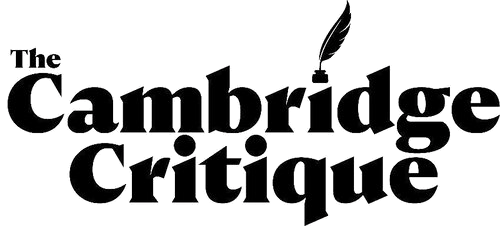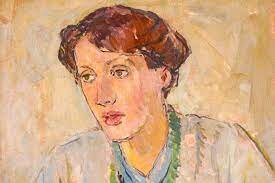VIRGINIA WOOLF AND HER LEGACY BY TIA BYER
A youthful Virginia Woolf, an icon of feminism for generations of women
This Spring marks the 80th anniversary of the death of one of Britain’s most important writers, Virginia Woolf. A leading figure in the 20th-century Modernist movement, she is also remembered for being a pioneering thinker on the intellectual status of women. The pre-eminent female member of The Bloomsbury group, Woolf’s novels include Mrs Dalloway (1925), To The Lighthouse (1927), and Orlando (1928). Yet Virginia Woolf’s life long struggle with mental health cast a shadow over her extraordinary career . The author suffered from what today would be known as manic depression and endured several mental breakdowns that began in adolescence. On the 28th March 1941, at the age of 59 , she drowned herself in a river close to her home, Monks House, in Sussex.
Much painted Virginia Stephen’s sister Vanessa Bell was an artist of the day
Although Virginia Stephen grew up at the very centre of the British literary establishment in fashionable London- her parents’ social circle included Henry James and Alfred Lord Tennyson - her links to Cambridge were profound. Her father was a Fellow at Trinity Hall, and her half-brothers studied at Cambridge. So too did the man who was to become her husband, fellow author and publisher, Leonard Woolf. Virginia Woolf’s most resounding connection to Cambridge came in the form of her trailblazing essay, ‘A Room Of One’s Own’. The work is based on two lectures given by the author in 1928 at the first two women’s colleges of the University of Cambridge, Newnham and Girton. Fuelled by her resentment at being denied a formal university education, Virginia’s political argument in ‘A Room of One’s Own’ attacks the exclusionary nature of intellectualism and the academy.
Painting of Virginia Woolf as featured in the Fitzwilliam Museum Exhibition
Virginia Stephen had a Victorian childhood and family life. Born in 1882, to middle-aged parents who were both on their second marriage, Virginia would remember her childhood as restrictive. Her father, Sir Lesley Stephen, was an editor and author, best known as Editor of the 26 volumes of the Dictionary of the National Biography. Her mother, Julia Prinsep Stephen, was a Pre-Raphaelite model and philanthropist yet had publicly voiced her objections to women’s suffrage. Victorian conventionality in the Stephen home pertained most profoundly to the issue of education. Whilst their brothers were sent to school and then university, Virginia and her sister, Vanessa, were home-schooled. Ironically, it would be the sisters, self-taught and independent in their craft, who would leave a mark on the world- Vanessa married Clive Bell and became an artist and interior designer-. Virginia always felt that she suffered because of her lack of education, an affliction most painfully felt when, in ‘A Room of One’s Own’, she describes the experience of being refused entry to an Oxbridge library on account of her sex. “What idea it had been that had sent me so audaciously trespassing I could not now remember”, she wrote scornfully. . In an act of mass insubordination, she called for fellow women to reclaim and rewrite the “lop-sided” history of British intellectualism. But it would be the dictum, “A woman must have money and a room of her own if she is to write fiction”, that has since come to define Virginia Woolf’s feminist perspective and influence.
Another study of Virginia by Vanessa
Sarah M. Hall on behalf of The Virginia Woolf Society of Great Britain, believes the significance of ‘A Room of One’s Own’ has changed over time. She points our that not all initial reactions to the seminal text were flattering. “When Virginia Woolf delivered her lecture to the students of Newnham and Girton …, you might have thought these were historic occasions. But, as it happens, no one thought them particularly memorable and different people recalled different things”. Whilst some audience accounts remember the author as goddess-like in her stage presence, others remember a slightly scruffy and rather shy persona.
Dame Laura Knight, The Dark Pool (1908–1918), evokes VW in Fitzwilliam Exhibition of 2019
Ms Hall points out that, “Woolf was in 1928 known as a novelist and book reviewer rather than a writer on women’s issues”. The author was, “46 years old; perhaps seeming like an elderly bluestocking to the students less than half her age”. Advertised as ‘Women and Fiction’, “It was only afterwards, when the talks had been revised and recast into a book, and renamed ‘A Room of One’s Own’, that the revolutionary material became apparent”. And it was this ‘revolutionary material’ that inspired the Fitzwilliam Museum’s 2018, ‘Virginia Woolf: An Exhibition Inspired by her Writings’.
Mature Virginia Woolf author of A room of One’s Own
Showcasing a variety of personal possessions and letters, the exhibition’s central artefact was an autographed manuscript of a ‘Room of One’s Own’ dated 1929. Leonard Woolf donated it to the museum in 1942, a year after Virginia’s death. Using her writing and her assertion of creative freedom as a lens, the exhibition also featured the works of over 80 artists from the last 150 years. It aimed to engage with and explore feminist perspectives on landscape, domesticity, and identity, as well as the writer’s complex understanding of the lineage of the female artist and writer.
Vita Sackville West and Virginia Woolf, dear friends and part of the same set.
The life and works of Virginia Woolf live on. Whether through art, literature, or the continued discussion around women’s rights, her cultural and political impact is undeniable. In employing a stream of consciousness in her fiction, Virginia Woolf broke new ground. As a pioneer of the narrative device, she was able to push creative experimentation to its limits by creating a literary technique that truly expressed the complexities of modern consciousness. Rather like James Joyce, Virginia Woolf’s use of the iconic method depicts the multitude of thoughts, feelings, and sensations as they pass through the mind of the narrator. But it is her emphasis on domestic concerns and the confinements they sometimes produce, that really sets Virginia Woolf’s literature apart. There is something inherently truthful in her verisimilitude, at times uncomfortably so. And it is in those moments of hauntingly real simulations that we gain access to the dark genius that is Virginia Woolf.













